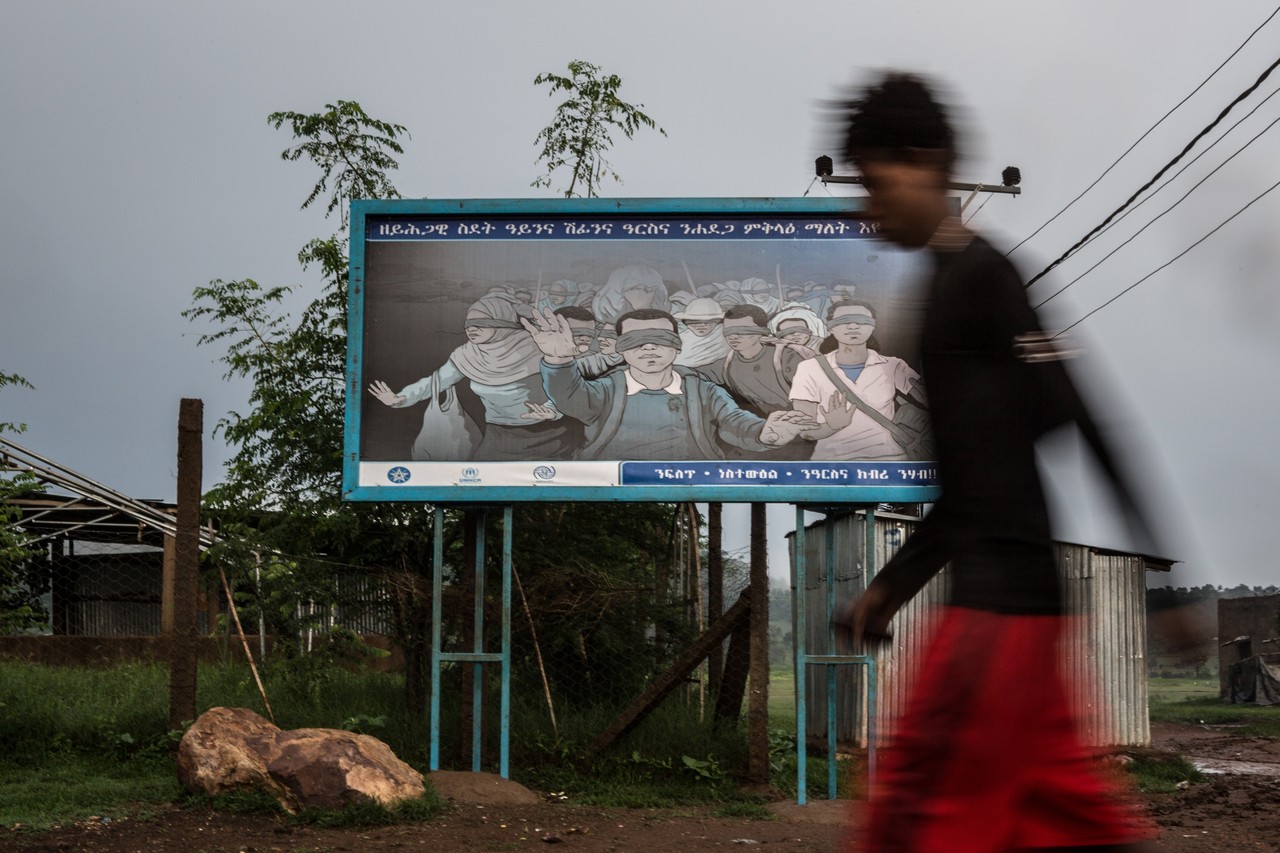PBS: Escaping Eritrea … [Read More...] about ካብ ውሽጢ ቤት ማእሰርታት ኤርትራ
Thousands flee isolated Eritrea to escape life of conscription and poverty
African Dictatorship Fuels Migrant Crisis
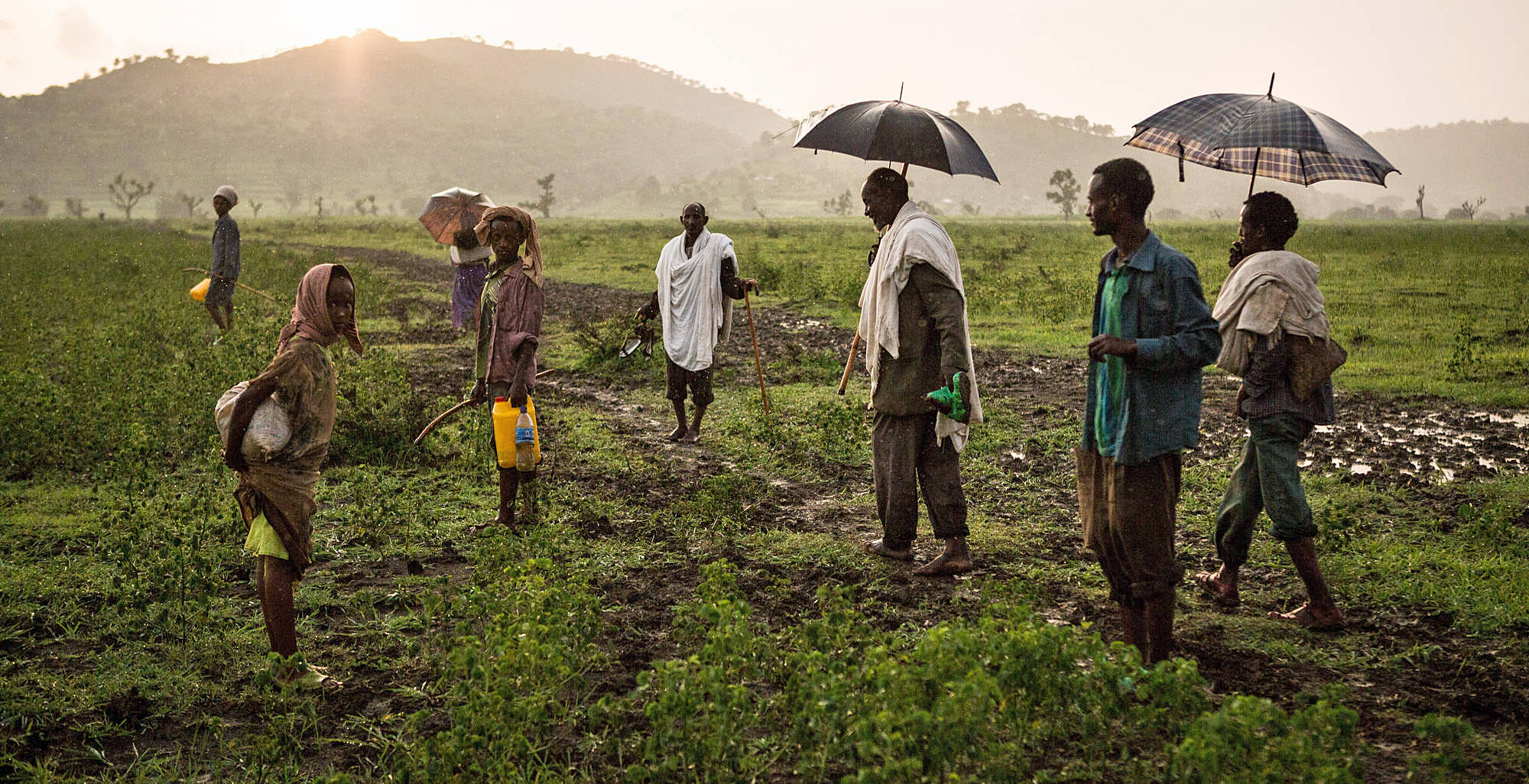
ASMARA, Eritrea—On a cool March evening soon after his 16th birthday, Binyam Abraham waited until his mother and young siblings were sleeping and slipped away to begin the long trek toward Eritrea’s southern border.
With his father trapped in open-ended military service that would soon snare him, too, Binyam walked for 19 hours without food or water to reach Ethiopia. He made a choice 5,000 of his countrymen make each month, by a United Nations estimate: to flee Eritrea and brave the world’s deadliest migrant trail, across the Sahara and the Mediterranean to Europe.
They leave behind one of the world’s fastest-emptying nations: a country of about 4.5 million on the Horn of Africa, governed by a secretive dictatorship accused of human-rights violations, that is playing an outsize role in the biggest global migration crisis since World War II.
“I didn’t tell my mother before I left, but I didn’t have a choice,” Binyam said, sitting in a mud-brick shack at Adi-Harush, a refugee camp in the foothills of Ethiopia’s Simien Mountains that has become ground zero for Eritrea’s exodus. Flanked by five young friends, all planning to brave the same dangerous journey, he said: “I have to go to Europe so I can help my family.”
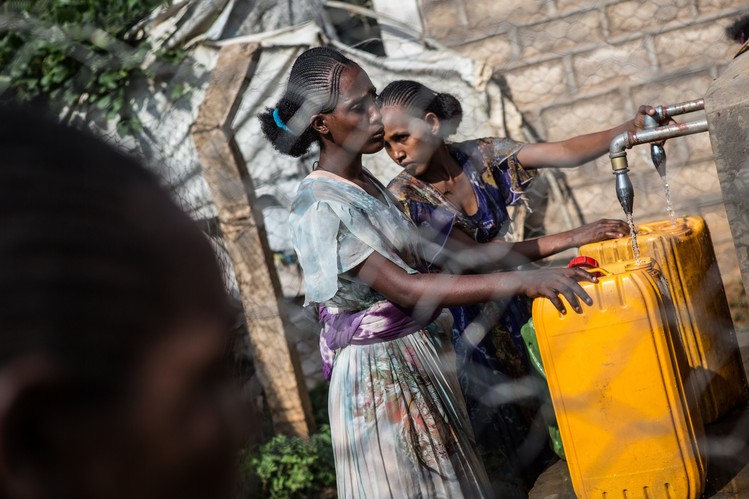
Attention is focused, amid the intensifying migration crisis, on Syrians fleeing civil war and making a dramatic run to Europe. Yet by some measures, the exodus from the smaller Eritrea is more extreme. From the start of 2012 to the middle of this year, 1 in 50 Eritreans sought asylum in Europe, nearly twice the ratio of Syrians, based on data from the European Union statistical service Eurostat.
The U.N. estimates that 400,000 Eritreans—9% of the population—have fled in recent years, not counting those who died or were stranded en route.
On the rickety smuggling boats crossing the Mediterranean, Eritreans comfortably outnumber other nationalities. More than a quarter of the 132,000 migrants arriving in Italy between January and September were Eritreans, according to the U.N. High Commissioner for Refugees.
Eritreans accounted for a majority of the 3,000 people who have drowned in the Mediterranean this year, humanitarian agencies say.
Despite this toll, emigration here is accelerating. The number of Eritreans seeking asylum in Europe quadrupled from 2011 to 46,000 last year. The exodus is catapulting the African country to the center of a divisive EU debate over which nations’ migrants should be granted refugee status, as the bloc struggles to respond to the wave from Syria.
The Eritreans flee one of the world’s most isolated nations, governed under emergency rule since a war with Ethiopia in 1998. Eritrea earlier fought a 30-year struggle for independence from Ethiopia, which is 20 times its size.
This David-and-Goliath dynamic has spurred Eritrea to maintain a state of emergency for 17 years, officials in Asmara said—suspending political, economic and social progress for the sake of national security.
A June U.N. report accused the regime, led by former rebel commander Isaias Afewerki, of “crimes against humanity” targeting its own population, including torture, mass surveillance and indefinite military conscription that amounts to a form of slavery. The government said the report, based on interviews done outside the country, was biased and false.
Eritrea is also under U.N. sanctions on a charge of supporting al Qaeda-linked terrorism in Somalia. In Eritrea, which is evenly split between Christians and Muslims, the government denies the charge.
Eritreans have been welcomed as refugees by EU governments since the 1980s, when they were fighting for independence against a Communist government in Ethiopia, according to the International Organization for Migration. But EU officials and migration experts say that now, Europe’s visceral debate over migration is pushing governments to reconsider that stance.
African asylum seekers are already being sidelined, say migration policy makers from the U.N. and other organizations.
“While Syrians are fleeing an obviously terrible and documented civil war, Eritreans are fleeing abuses which to the rest of the world are largely invisible because of the regime’s secretiveness,” said Kristina Touzenis, head of the of the Migration Law Unit of the International Organization for Migration, or IOM.
In some countries, a policy shift has begun. The U.K. in the second quarter of this year cut the number of Eritrean asylum seekers accepted to 29% of applicants from 77% in the previous quarter.
The secrecy of Eritrea’s government, which expelled foreign correspondents in 2008, makes it difficult to document forces behind the exodus.
Seen on a rare trip by a Wall Street Journal reporter to Asmara—Eritrea’s showpiece capital famed for the fading grandeur of its Italian architecture—the slow pace of life contrasted with the region’s buzzing and chaotic metropolises. Residents gathered at cafes or loitered under modernist facades. Staples like milk were in short supply.
Eritrean officials say asylum seekers exaggerate hardships and leave because Europeans grant them refugee status. “If people feel that if you get to Europe asylum is easy, that’s a pull factor,” said Information Minister Yemane Ghebre Meskel.
Indefinite conscription and isolation are necessary, he said, because the country remains effectively at war with Ethiopia, which he said occupies Eritrean territory in violation of a U.N.-sponsored peace agreement. Ethiopia denies that any land it controls belongs to Eritrea.
Eritreans abroad say they are pushed to leave by conscription that enlists every man and woman in the military during their last year of high school. Last week, 10 Eritrean soccer players who were in Botswana for a match defected there. Some Eritrean refugees fled to Israel through the Sinai Desert until Israel erected a fence there. This week, an Eritrean man was killed in Israel when attacked by a mob who mistook him for an assailant at an earlier bus-stop attack.
Teenagers are inducted at the Sawa military base, get four months of training, then take an exam that determines whether they are put in active service or allowed to continue their education as reservists. Around two-thirds are immediately mobilized as soldiers. But all remain conscripts, often for decades. They are locked in a system that pays a monthly stipend of 500 nakfa, about $10 on the black market, and forbidden to leave the country.
Eritrean officials said they are in the process of introducing a pay scale that better rewards educated and more experienced conscripts.
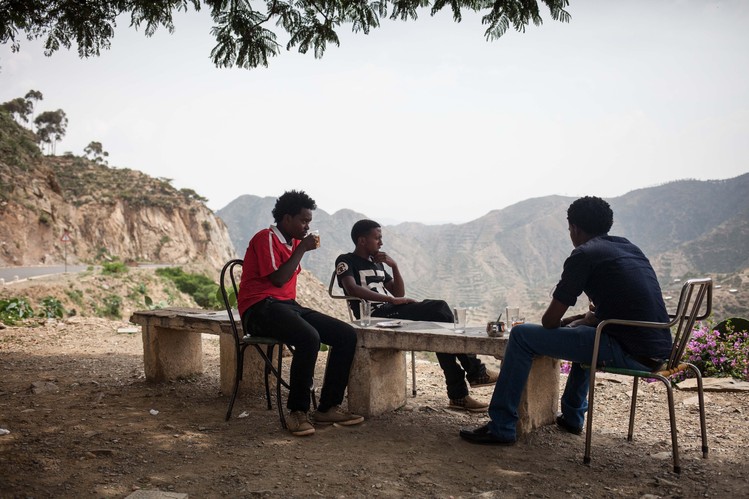
“A lot of our population, especially the young, were forced to be engaged in the defense of the country rather than in the productive sector,” said Hagos Ghebrehiwet, the ruling party economics chief. “Our land is occupied, and the international community is not doing anything.”
Officials say the exodus has one upside for the impoverished nation: hard currency. Money from the expanding diaspora provides a badly needed boost to the economy.
In late September, dozens of emigrants who had secured citizenship and livelihoods in Europe, offering protection from the Eritrean regime’s policies, were sipping macchiatos at Asmara’s Cinema Roma cafe, preparing to return to Northern European capitals after vacationing with family. The appearance of a leisurely pace of life in Asmara contrasts to testimonies of abuse, especially in more remote and hard-to-reach areas.
On one cafe table, a 70-year-old Eritrean visiting from Stockholm drank coffee with his 17-year-old nephew from Asmara. They declined to give their names, saying they were “just ordinary Eritreans,” but the youth said he wanted to be a doctor and had plans to join a relative who is a surgeon in Germany. Inside the grand hall of the Cinema, a 1930s bar served Negroni cocktails to a group of young women, impeccably manicured, who spoke among themselves in German.
The IOM says the presence of wealthier migrant relatives spurs the exodus by reinforcing the notion that emigration is a path to freedom and wealth.
“It’s a dilemma for the government,” Mr. Ghebre Meskel said: “On the one hand, they come up with whatever stories they like to obtain asylum. But they support their families, there are remittances.”
A hundred miles south, some of the 113,000 refugees waiting in refugee camps at the start of their journeys to Europe said they felt little choice but to flee.
Life in the camp
In Adi-Harush camp, a patchwork of concrete huts and muddy tracks in a mountainous region, more than 20 residents spoke of their hope to escape Eritrea’s conscription and its economic and social breakdown. The camp is a staging ground for the trek to Europe, but refugees here have yet to confront the rigors of the journey ahead.
In the huts, groups gather to plot travel plans and track friends’ progress on cellphones. Several times a week, crowds pay a few cents to squeeze into corrugated steel shacks to watch one aspirational image of the prosperity of Europe on TV: the English soccer league.

Refugees say the camp houses a sophisticated network of Eritrean and Ethiopian smugglers who can organize journeys if residents have the money.
Some who leave for Europe will never make it. The camp’s “mourning house” is where people go to cry and pray for friends or relatives who perished on the journey.
Billboards warn: “Illegal movement is like walking blindfolded. Let’s be aware, let’s be curious.” The Eritreans aren’t deterred, passing through the camps in ever-greater numbers, according to Ethiopian authorities.
Binyam, the 16-year old, said he arrived six months ago after fleeing poverty and forced conscription that had trapped his father for decades.
“For as long as I’ve known, he’s been a soldier…. Each year I saw him once, when he was allowed leave,” said Binyam, wearing a soccer jersey stained with food and dirt. “Now I will get to Europe to help my family.”
He said he walked through the night with a friend from his village, avoiding border guards to reach the Ethiopian frontier. His friend left the camp earlier this year for Sudan, the first stage of a dangerous journey across the Sahara and ultimately the Mediterranean.
Like many youngsters here, Binyam is unsure how he will pay for his journey and whether he will survive it: “I heard people are dying, being tortured or enslaved. I heard some die in the desert or the sea,“ he said. ”But some arrive. I hope for that.”
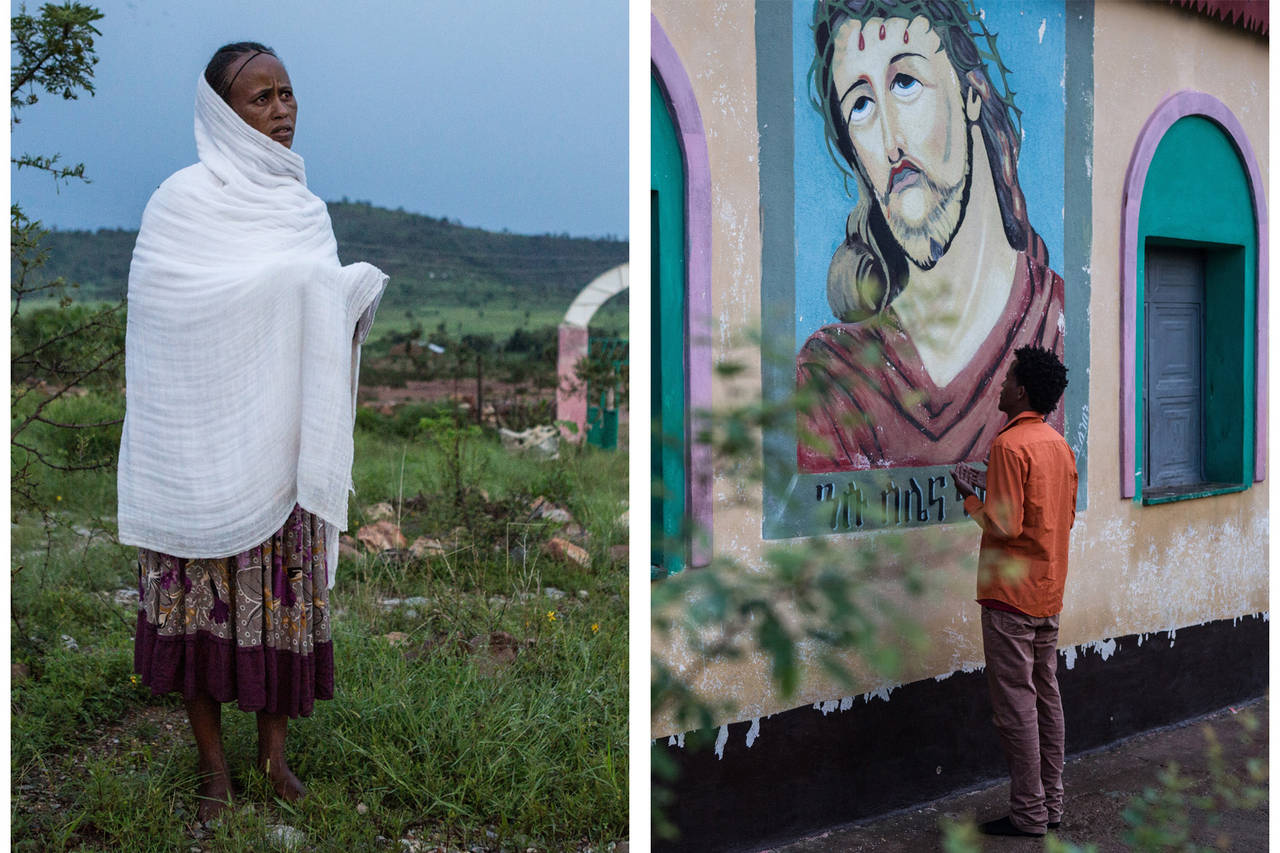
In a nearby hut, nine young men holding a traditional coffee ceremony, boiling the aromatic brew on coals, laid out their plans. Semere Ab said his aunt in Canada would use the hawala cash-transfer system to send smugglers $25,000. “There are smugglers in this camp. You pay them when you move from here,” he said. “In four months, I will go. We will all go together.” The boys nodded.
Ethiopian and Eritrean authorities accuse each other of profiting from the smuggling. The Ethiopian refugee agency called ARRA said it was planning to crack down. Local officials said they have arrested suspected smugglers.
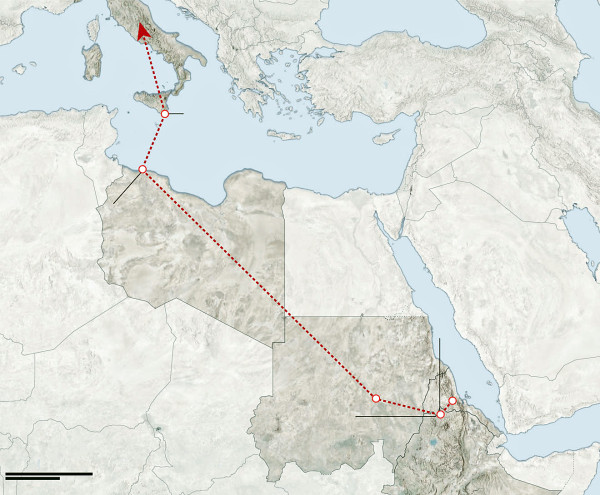
Shewit Hadera, a 25-year-old refugee who works with unaccompanied Eritrean children in the care of the Norwegian Refugee Council, carries physical and emotional scars. Imprisoned in 2008 for trying to flee, he said, he was regularly tortured. He showed a leg covered in scar tissue he said was from being burned with boiling tea.
“They beat us at night, especially around midnight,” he said. “You couldn’t identify them because they wore masks.” He said his father was jailed for six months as punishment for his flight.
Eritrean officials conceded torture occurs in some prisons but said it wasn’t systematic. “Torture is not allowed. That does not mean it may not happen here and there,” said Mr. Ghebre Meskel, the information minister.
“Sometimes you will meet people who have fled here and they will have some marks. It can happen in some units,” he said. “But one has to draw a difference: It is not systematic, it’s not officially sanctioned, it’s not in the law.”
Eritrea is seeing its future walk away. Relative to its population, Eritrea has the biggest group of refugees who are unaccompanied minors.
At Norwegian Refugee Council facilities, 540 unaccompanied children, as young as five, get basic schooling. Social workers say some resist school because it is what happens before one gets conscripted.
Not so for 11-year-old Henok Mahri, the top student in class. “I want to fly abroad and continue my education and help my family by getting a job,” he said, sitting on a white plastic chair, tiny legs dangling.
“I have no mother that gives me advice,” he wrote on a drawing he made of his mother back in Eritrea. “You are childless and I am not your son.”
Asked when he thought he would see her again, he paused for a moment.
“When God allows.”
